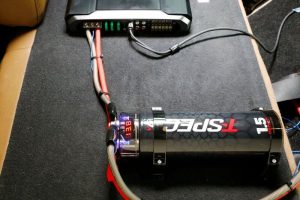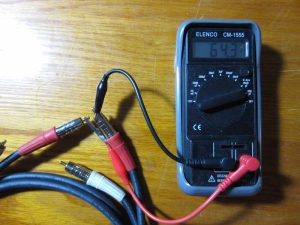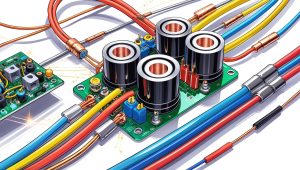Updating your Pioneer NEX firmware is easy and can make your car’s entertainment system better. To start, it’s key to know why updates are important. They keep your system running well and efficiently. We’ll show you how to update your Pioneer NEX firmware in simple steps.
Contents
- Introduction to Pioneer NEX Firmware Updates
- Understanding Pioneer NEX Firmware Updates and Their Importance
- Essential Prerequisites Before Starting the Update
- Required Tools and Materials for the Update Process
- Checking Your Current Firmware Version
- How to Update Firmware on Pioneer NEX System
- Safety Precautions During the Update Process
- Common Update Errors and Solutions
- Verifying Successful Installation
- Maintaining Your Updated System
- Best Practices for Future Updates
- Conclusion
- FAQ
Introduction to Pioneer NEX Firmware Updates
Keeping your Pioneer NEX system updated is vital for its performance and features. By following this guide, you can update your firmware easily. This will make your entertainment experience better, whether it’s for better performance or new features.
Key Takeaways
- Regular pioneer nex firmware updates are essential for optimal system performance
- Updating your firmware can add new features and improve overall functionality
- The how to update firmware on pioneer nex process is straightforward and easy to follow
- It’s crucial to follow the correct steps to avoid any potential issues during the update process
- Updating your Pioneer NEX firmware can enhance your in-car entertainment experience
- Stay up-to-date with the latest pioneer nex firmware update to ensure you have the latest features and improvements
Understanding Pioneer NEX Firmware Updates and Their Importance
Firmware updates are key for your Pioneer NEX system’s best performance. They add new features, boost performance, and fix bugs. Keeping your system updated ensures it works smoothly.
The pioneer nex firmware update process makes your system better. It brings you the latest features and improvements. This is why keeping your system updated is so important.
What is Pioneer NEX Firmware?
Pioneer NEX firmware controls your system’s functions and features. It makes sure all parts work well together.
Benefits of Regular Firmware Updates
Regular updates have many benefits, including:
- Improved system performance and stability
- New features and enhancements
- Bug fixes and security patches
- Enhanced user experience
How Often Should You Update?
It’s best to check for updates every few months. This keeps your system current and lets you enjoy new features.
Essential Prerequisites Before Starting the Update
Before you start the update, make sure you meet the necessary requirements. This includes checking if your system is compatible and gathering all needed materials. Getting ready for the update is important to avoid problems.
Here are some key steps to take before you begin:
- Check if your system is compatible with the new firmware
- Get all the materials you need, like a USB drive and internet
- Back up your data to avoid losing it
By following these steps, you’ll be ready for the update. This helps avoid errors and ensures a successful update.
Required Tools and Materials for the Update Process
To update your Pioneer NEX firmware, you need the right tools and materials. This includes a compatible storage device and a stable internet connection.
The update process needs specific equipment for a smooth installation. Here are the key requirements:
Storage Device Requirements
A compatible storage device, like a USB drive, is needed for the update. It should have enough space for the update files.
Internet Connection Specifications
A stable internet connection is needed to download the update files. The connection should be fast and reliable to avoid interruptions.
Additional Equipment Needed
You might need a computer or a mobile device for the update. Make sure you have all the necessary tools and materials before starting.
Having the right tools and materials ensures a successful update. You’ll enjoy the latest Pioneer NEX firmware benefits.
Using the correct tools and materials is key. It prevents errors and makes the installation smooth.
Checking Your Current Firmware Version
Before you update, it’s important to check your current firmware version. This step ensures you’re ready for the update and running the latest version. It’s a simple process that takes just a few steps.
To start, go to your Pioneer NEX system’s settings menu. Then, find the “System” or “Settings” section, depending on your model. Look for “Firmware” or “System Information” to see your current version.
When you check your firmware version, write down the exact number. This will help when you download the latest update. You can find updates on the Pioneer website. Keeping your firmware updated means you get the newest features and improvements.
- Ensures you’re running the latest firmware version
- Helps determine if an update is available
- Guarantees a smooth update process
By following these steps and checking your firmware regularly, you’ll keep your Pioneer NEX system updated and running well.
How to Update Firmware on Pioneer NEX System
Updating your Pioneer NEX firmware is easy. First, download the right firmware for your system. You can find the latest updates on the Pioneer website. Make sure to follow the instructions carefully to avoid any issues during the update process.
After downloading the firmware, prepare your USB drive. You need to format it to the correct file system and copy the firmware files to the root directory. It’s important to follow Pioneer’s instructions to prepare the USB drive correctly.
Downloading the Correct Firmware
- Visit the Pioneer website and search for the latest firmware updates
- Select the correct firmware for your Pioneer NEX model
- Download the firmware and save it to your computer
Preparing Your USB Drive
- Format the USB drive to the correct file system
- Copy the firmware files to the root directory of the USB drive
- Ensure that the USB drive is properly prepared according to the instructions provided by Pioneer
Installing the Update
Now, insert the USB drive into your Pioneer NEX system and follow the on-screen instructions. The update should take a few minutes. Once it’s done, your system will have the latest firmware.
Regularly updating your Pioneer NEX firmware is key to keeping it stable and secure. By following these steps, you can easily update your system and keep it current.
Safety Precautions During the Update Process
When you update your Pioneer NEX firmware, it’s important to be careful. Safety is key to avoid risks. Here are some steps to keep your update safe and successful:
Some key safety precautions during update include:
- Avoid interrupting the update process, as this can cause system instability or even damage to your device.
- Ensure your device is properly connected to a power source to prevent shutdowns during the update.
- Keep your device away from extreme temperatures, moisture, or physical stress, which can affect the update safety and overall system performance.
By following these steps, you can reduce the chance of errors or damage. This ensures a smooth and safe update process.
Common Update Errors and Solutions
When updating, you might run into errors that can be annoying. It’s important to know how to fix these issues. This way, you can keep moving forward without problems.
First, understand the error codes and what they mean. These codes often point to connection, compatibility, or file issues. Knowing this helps you find the right fix.
Error Code Explanations
- Connectivity error codes: These codes show problems with your internet or device connection.
- Compatibility error codes: These codes mean your device or software can’t handle the update.
- Corrupted file error codes: These codes tell you the update files are damaged.
Troubleshooting Steps
To fix common update errors, start by checking your internet. Make sure your device can handle the update. Also, check if the update files are okay. These steps can help you solve the problem.
When to Seek Professional Help
If you’ve tried everything and still have issues, it’s time to get help. A professional can offer solutions and make sure the update goes smoothly.
Verifying Successful Installation
After updating, it’s key to check if everything went well. This makes sure your Pioneer NEX system works great and the update was done right. You need to look for any problems that might have come up during the update.
It’s also important to do post-update checks. These help make sure the new firmware is working right. You’ll want to see if all features are working and if the system is running well.
Post-Update Checks
- Check for any error messages or warnings
- Verify that all features are working correctly
- Test the system’s performance to ensure it is running smoothly
System Performance Testing
Testing the system’s performance is crucial. It makes sure the update didn’t slow things down. You should test all the features and functions to see if they’re working right.
By doing these steps and checking after the update, you can be sure your Pioneer NEX system is working great. Checking if the installation was successful and testing the system’s performance will make you feel confident. It ensures your system is running at its best.
Maintaining Your Updated System
To keep your Pioneer NEX system running smoothly, it’s key to focus on maintenance. Regular checks and updates are crucial. They keep your system secure and up-to-date. This way, you can avoid problems and enjoy a smooth experience.
Here are some tips for keeping your system in top shape:
- Regularly back up your data to avoid loss in case of a system failure
- Install software updates as soon as they’re available for the latest security and features
- Keep an eye on your system’s performance and fix any issues quickly
By following these tips, you can make your Pioneer NEX system last longer.
Remember, keeping your system updated is an ongoing task. It needs regular care and attention. By doing so, you’ll have a reliable Pioneer NEX system for many years.
Best Practices for Future Updates
To keep your system up-to-date, it’s key to follow some best practices. Setting up an update schedule is a must. It helps you stay on track and never miss an update. By doing this, you keep your system secure and running smoothly.
Creating an Update Schedule
An update schedule is a plan for when to update your system. You can choose a monthly or quarterly schedule, based on your needs. Having a schedule means you’ll always know when updates are coming and can plan for them.
Backup Recommendations
Backing up your data is vital before updating. Make sure to save all important files and data. This step is crucial to protect your system from any potential loss.
Documentation Tips
It’s important to keep a record of your updates. Document each update, including the date, time, and any changes. This record will help you troubleshoot any issues that might come up.
By following these best practices, you can keep your system secure and up-to-date. Always prioritize your system’s security and performance by staying current with updates.
Conclusion
Updating your Pioneer NEX system’s firmware is key to keeping it running well. It ensures you get the newest features and improvements. Just follow the simple steps in this guide to update your system easily.
It’s important to keep up with firmware updates regularly. This keeps your Pioneer NEX system in top shape. By checking for updates often and installing them quickly, you’ll enjoy the best in-car entertainment experience. With proper care, your Pioneer NEX system will serve you well for many years.
FAQ
What is Pioneer NEX Firmware?
Pioneer NEX firmware is the software that runs the Pioneer NEX car entertainment system. It controls the system’s features and how well it works.
Why are regular firmware updates important?
Regular updates for the Pioneer NEX system are key. They add new features, improve performance, and fix bugs. Keeping your system updated ensures it works its best.
How often should I update my Pioneer NEX firmware?
Update your Pioneer NEX firmware whenever Pioneer releases a new version. They update often to fix problems and add new stuff. Staying current keeps your system running smoothly.
What are the essential prerequisites before starting the firmware update?
Before updating, make sure your system is compatible and you have all needed materials. Back up your data too. This prevents problems and makes the update go smoothly.
What tools and materials are needed for the firmware update?
You’ll need a compatible storage device, a stable internet connection, and any extra gear Pioneer says you need. Having the right tools makes the update process easier.
How do I check my current Pioneer NEX firmware version?
It’s important to know your current firmware version before updating. You can check this in your system’s settings or the owner’s manual. Knowing this helps you see if an update is needed.
What are the steps to update the firmware on my Pioneer NEX system?
To update, download the right firmware, prepare your USB drive, and follow Pioneer’s instructions. Following these steps ensures a successful update.
What safety precautions should I take during the firmware update?
Be careful during the update to avoid risks. Make sure your power is stable, don’t interrupt, and follow Pioneer’s instructions exactly.
What common errors might I encounter during the firmware update, and how can I troubleshoot them?
You might run into errors like failed downloads or installation problems. Knowing how to fix these issues can help. If you still have trouble, you might need professional help.
How can I verify that the firmware update was successful?
After updating, check if everything works right. Make sure your system is running the new firmware and working as it should.
What steps should I take to maintain my updated Pioneer NEX system?
To keep your system in top shape, back up your data regularly, update your firmware, and document any changes. This ensures your system stays smooth and long-lasting.
What are some best practices for handling future firmware updates?
To get ready for future updates, set up a regular update schedule, keep good backups, and document your updates. These practices help you stay ahead and ensure a smooth transition to new firmware.






